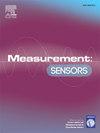改进了高速载体穿透物体的行程计算方法
Q4 Engineering
引用次数: 0
摘要
为了提高高速载体侵彻过程中行程计算的精度,提出了一种侵彻过程中加速度数据的处理方法。通过仿真得到侵彻加速度数据,并利用傅里叶变换分析这些数据的时频特性。针对侵彻加速度信号常受高频振荡噪声污染的特点,提出了一种新的信号处理方法。在仿真中采用控制变量法,确定了高频噪声与有用信号之间的频率边界。在应用截止频率为10 kHz的低通滤波器后,仿真结果表明处理后的信号提供了足够精确的行程信息。硬件方面,针对加速度传感器信号设计了专门的信号调理电路,并通过弯刀锤实验验证了其有效性。此外,半物理模拟试验进一步证实了所提出的行程计算方法的准确性。结果表明,本文提出的改进方法可以显著提高高速载体侵彻目标时的行程计算精度。本文章由计算机程序翻译,如有差异,请以英文原文为准。
Improved travel calculation method for high-speed carriers penetrating objects
To improve the accuracy of travel calculations during the penetration of objects by high-speed carriers, this paper proposes a method for processing acceleration data during the penetration process. Through simulation, penetration acceleration data were obtained, and Fourier Transform was employed to analyze the time-frequency characteristics of these data. Given that penetration acceleration signals are often contaminated by high-frequency oscillatory noise, a novel signal processing approach is introduced. Using a controlled variable method in simulation, the frequency boundary between high-frequency noise and useful signals was identified. After applying a low-pass filter with a cutoff frequency of 10 kHz, the simulation results indicated that the processed signal provides sufficiently accurate travel information. On the hardware side, a specialized signal conditioning circuit was designed for the acceleration sensor signals, and its effectiveness was verified through Machette hammer experiments. Additionally, semi-physical simulation tests further confirmed the accuracy of the proposed travel calculation method. The results demonstrate that the improved method presented in this paper can significantly enhance the precision of travel calculations during the penetration of objects by high-speed carriers.
求助全文
通过发布文献求助,成功后即可免费获取论文全文。
去求助
来源期刊

Measurement Sensors
Engineering-Industrial and Manufacturing Engineering
CiteScore
3.10
自引率
0.00%
发文量
184
审稿时长
56 days
 求助内容:
求助内容: 应助结果提醒方式:
应助结果提醒方式:


